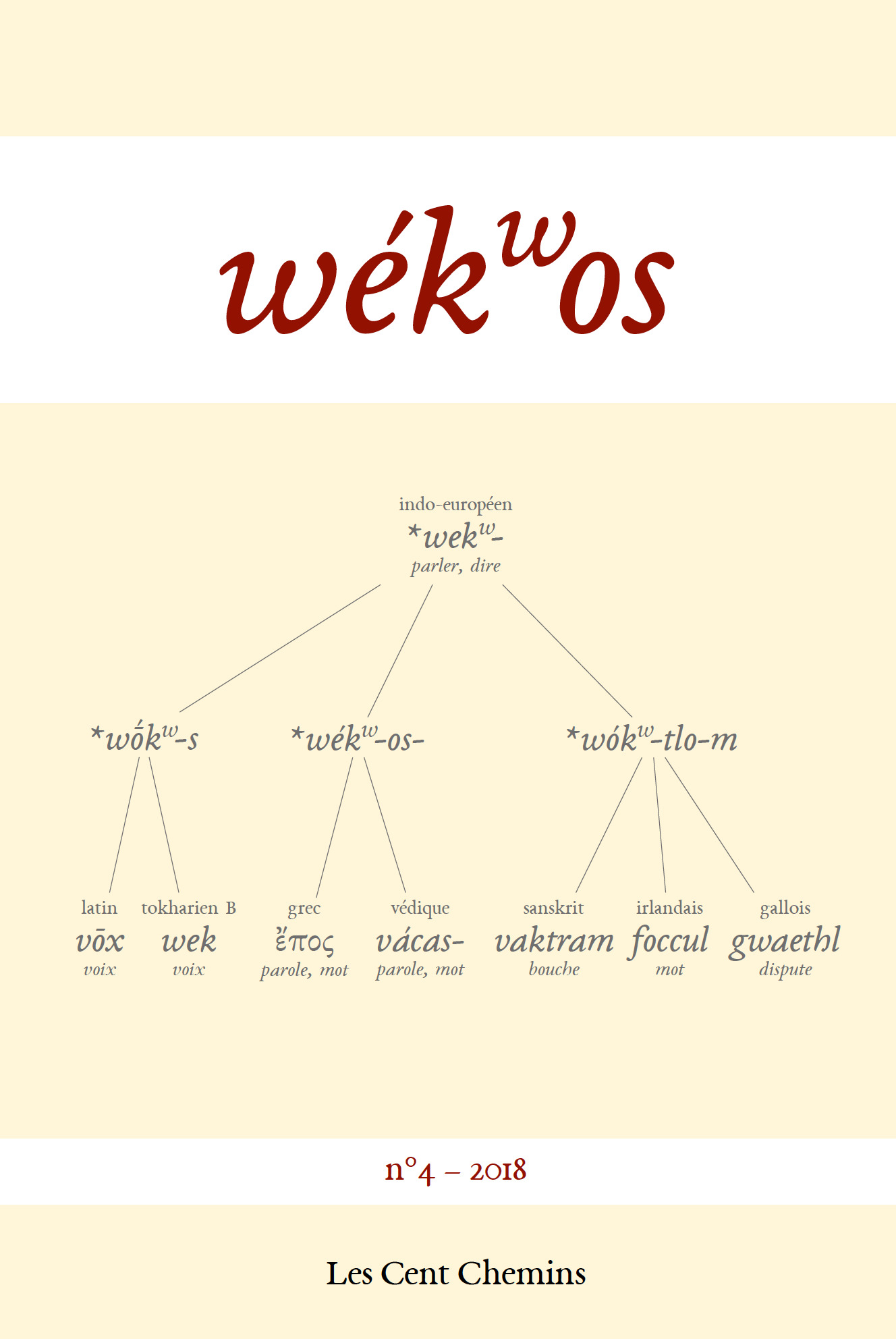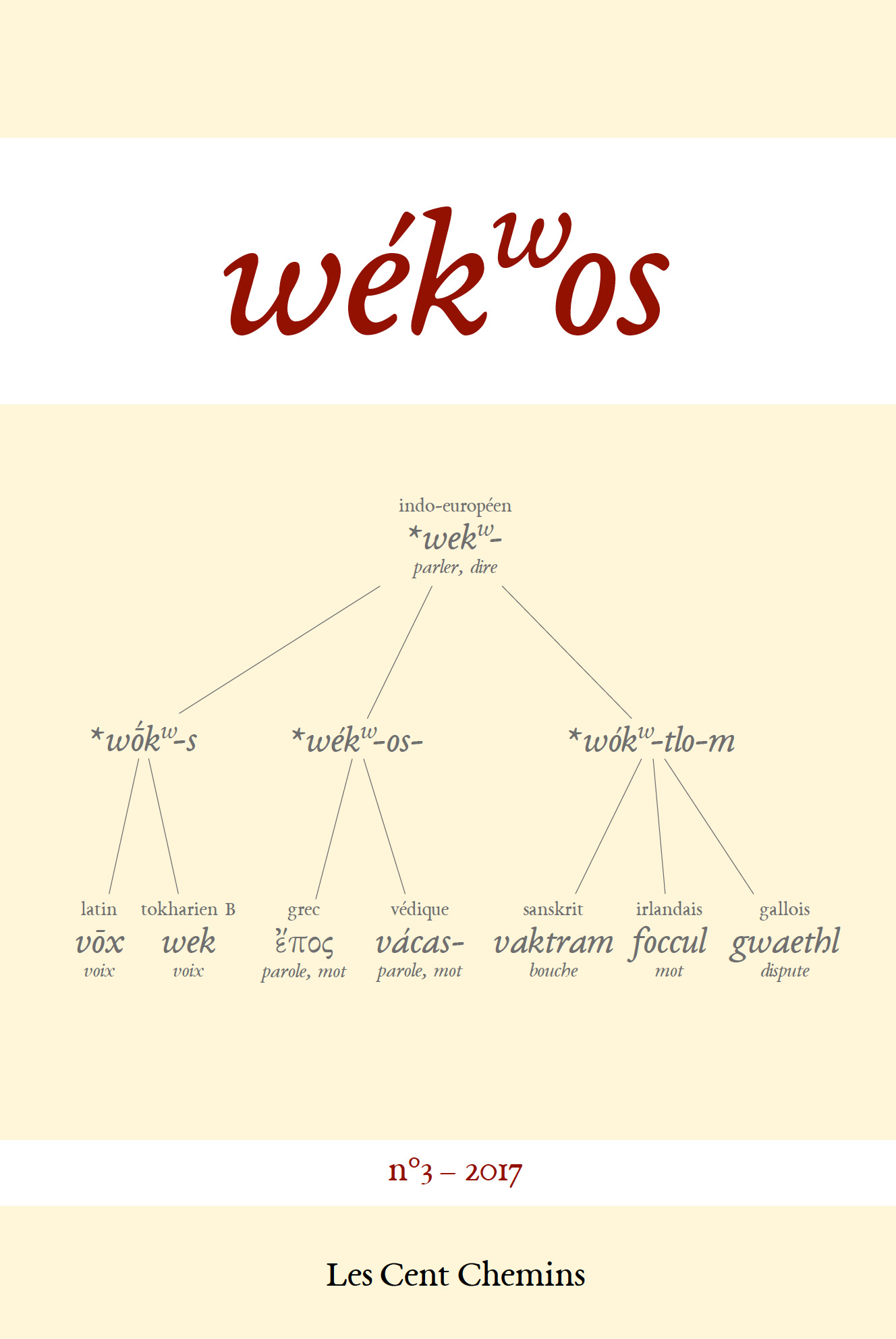Latest issue
n°7 – 2022-2023

|
John D. BENGTSON, « Notes on the Indo-European heteroclitic declension and Euskaro-Caucasian oblique stem markers » Harald BICHLMEIER \& Václav BLAŽEK, « Liger » Xavier DELAMARRE, « Le traitement d’i.-e. *gwh- en gaulois » Wolfram EULER, « „Abschwächung“ starker Verben im Germanischen (Stammklassenwechsel starker Verben in den germanischen Sprachen) » Romain GARNIER, « On the Newly Found Lydian Inscription from Denizli » Philippe HATTAT, « De nouveau sur PIE *ked- » Athanaric HUARD, « Two unidentified languages from ancient Kucha » François MÜLLER, « Austrasie – Neustrie. Désignation et Signification » Valéry RAYDON, « MERCURIUS *SINTOTAMUS. Une nouvelle épiclèse gauloise du dieu Mercure découverte chez les Memini » Diether SCHÜRR, « Tochter in anatolischen Sprachen » Gabriel SOLANS, « Paléogénétique : que peut-elle dire aux linguistes sur les langues indo-européennes ? » Comptes-rendus Index |



